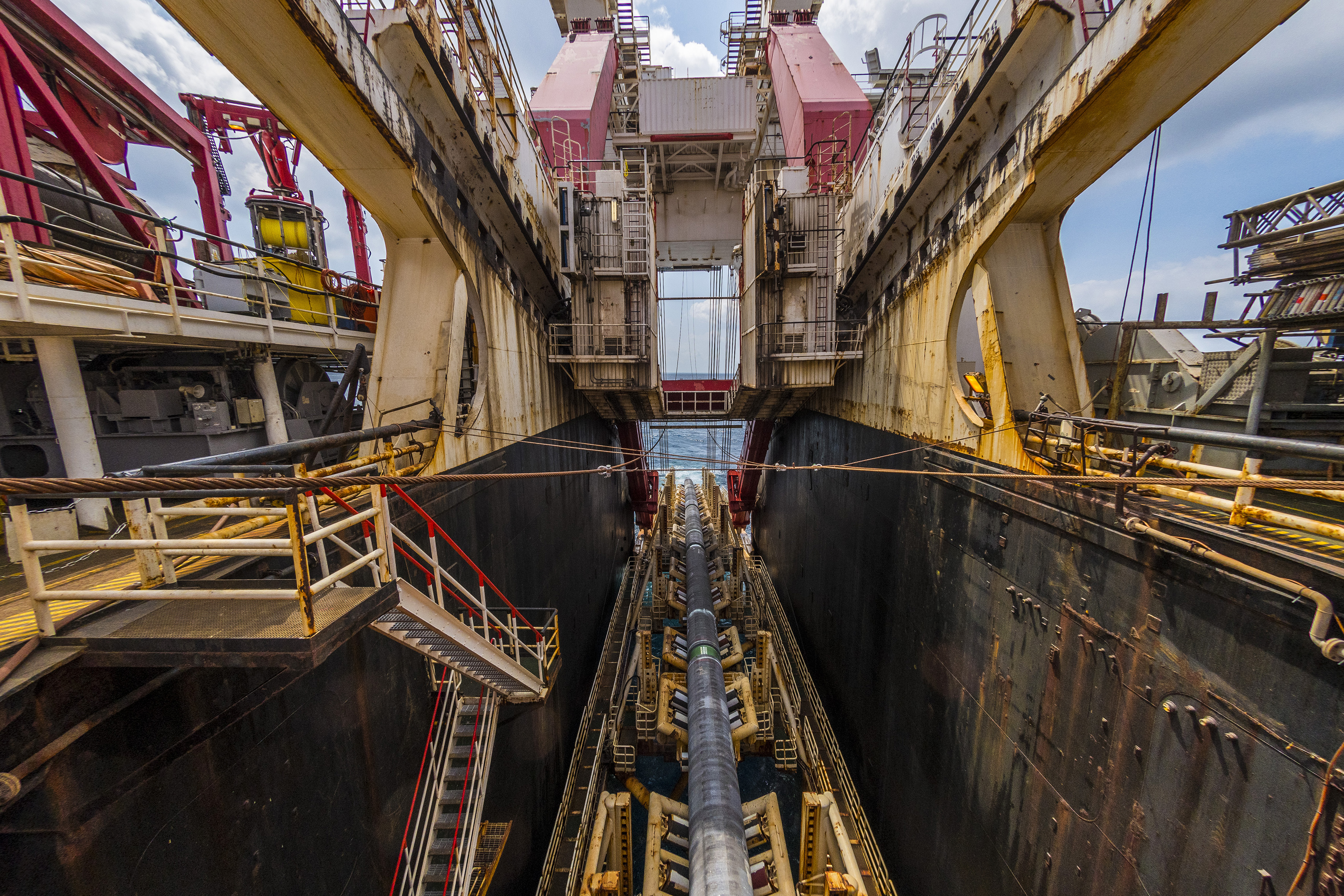February 2020, Vol. 247, No. 2
Features
New Pipelines of Latin America
By Mauro Nogarin, Contributing Editor
While proven reserves of natural gas in Latin America represent only 4% of global reserves, gas pipeline infrastructure is currently insufficient to meet growing demand.
The large countries of the region, particularly Brazil, Mexico and Argentina, are large producers and large importers of natural gas, but each faces its own infrastructure challenges to meet domestic demand.
Brazil has 5,800 miles (9,409 km) of pipelines but lacks distribution infrastructure in the central part of the country. Argentina has a substantial but aging network that requires updating, while Colombia recently stepped up its efforts to increase natural gas supplies in both the western coast and eastern part of the country.
Mexico needs more gas pipelines for electricity generation, and only last month opened the Texas-Tuxpan gas pipeline to meet the growing demand in the central and south-southeast regions of the country.
In addition, the region only has 16 cross-border integration pipelines: seven between Argentina and Chile; three between Bolivia and Argentina; two each between Argentina and Uruguay, with one connecting Bolivia with Brazil; one between Argentina and Brazil; and another between Colombia and Venezuela.
Argentina
In September, YPF reached an agreement to process the Vaca Muerta gas, which included the construction of the gas pipeline and liquefying plant in Bahía Blanca.
The government-subsidized project from Vaca Muerta will cost an estimated $ 1 billion for pipeline construction and potentially an additional $500 million additionally for a liquefaction plant.
The government will tender an $800 million project in the area of Bahía Blanca. For this stage, the funds offered by the Foreign Private Investment Corporation (OPIC) and contributions from the Anses Security Guarantee Fund (FGS) of Anses could be used.
This work is in anticipation of two major stages: the first, from Neuquén to Salliqueló in the province of Buenos Aires, which would connect with the current system to reach Bahía Blanca or Greater Buenos Aires; the second is from Salliqueló to San Jerónimo, to reach the coastal area. Both stages would add a total of 714 miles (1,150 km), of gas pipeline.
Bolivia
After signing a memorandum of understanding in June 2019, the final design technical study of the 12-inch pipeline and a Villa Montes/Asunción length is expected in February. The capacity will be 6 MMcm/d to10 MMcm/d, with a start-up targeted for the first half of 2024.
Brazil
At the end of September, the state energy search company (EPE), responsible for planning the energy sector, said the growth of national natural gas production justifies the construction of 16 pipelines for the coming years.
Projects, such as the central Brazil gas pipeline, reaching Brasilia and the Uruguaiana-Porto Alegre gas pipeline, will allow a boost to Brazil’s will provide a boost to the economy. The capacity of the pipeline would go from the 59 MMcm/d to 147 MMcm/d, due to increased production in the bays of Campos, Santos and Sergipe-Alagoas.
Of the 16 gas pipelines, five will connect the maritime platforms to the continent, from Pre-Sal to Sergipe-Alagoas Bay, while the others will transport the gas to the other consumer markets.
The largest gas pipeline in Central Brazil is 563 miles (906 km) and will connect the city of Sao Carlos to the federal capital.
Colombia
There are seven new projects in Colombia. The Ministry of Mines and Energy, through the Energy Mining Planning Unit, seeks to strengthen the reliability of natural gas supply throughout the national territory.
One project is the bi-directional Yumbo-Mariquita gas pipeline designed to transport 250 MMcf/d and expected to come into operation in September 2023.
Additionally, construction of Loop 10, at the Mariquita-Gualanday pipeline, with a length of 93 miles (150 km), should be completed early in 2020.
Two pipelines will enable bi-directionality. The first is Barrancabermeja Ballena, which has an interconnection with the Ballena-Cartagena tube. The second, the Barranquilla-Ballena, links to the Barrancabermeja pipeline. Both also expected to be online early in 2020.
Mexico
According to the Secretary of Energy (Sener), two gas pipelines, totaling 760 miles (1,224 km), will be delivered in December. The first the 280-miles (452-km) La Laguna-Aguascalientes, commissioned by the Federal Electricity Commission (CFE), will have a capacity of 1.29 Bscf/d.
The second is already in its final phase of construction – the South Texas-Tuxpan South submarine pipeline, covering 480 miles (772 km), with a capacity of 2.6 Bscf/d.
The 381-mile (614 km) Samalayuca-Sasabe gas pipeline is also under construction and has a capacity of 472 MMscf/d. So is the 232-mile (374 km) Villa de Reyes-Aguascaliente-Guadalajara with a capacity of 886 MMscf/d.






Comments